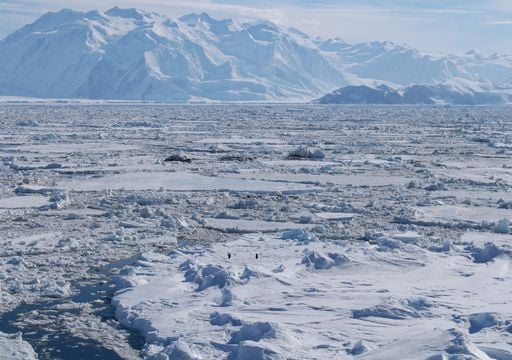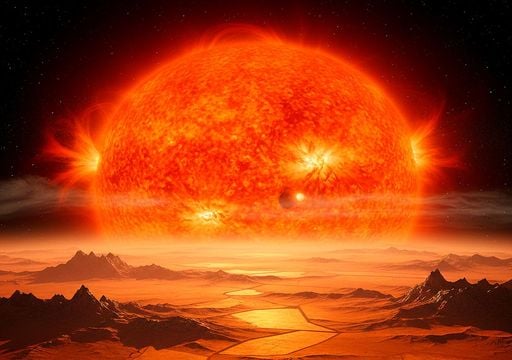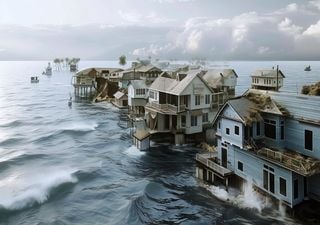Scientists Show Us When Sea Levels Were at Their Highest
Sea levels were extraordinarily high during the last period of the dinosaur age. However, a team of researchers estimates that this level may have been even higher before that. Find out more here!
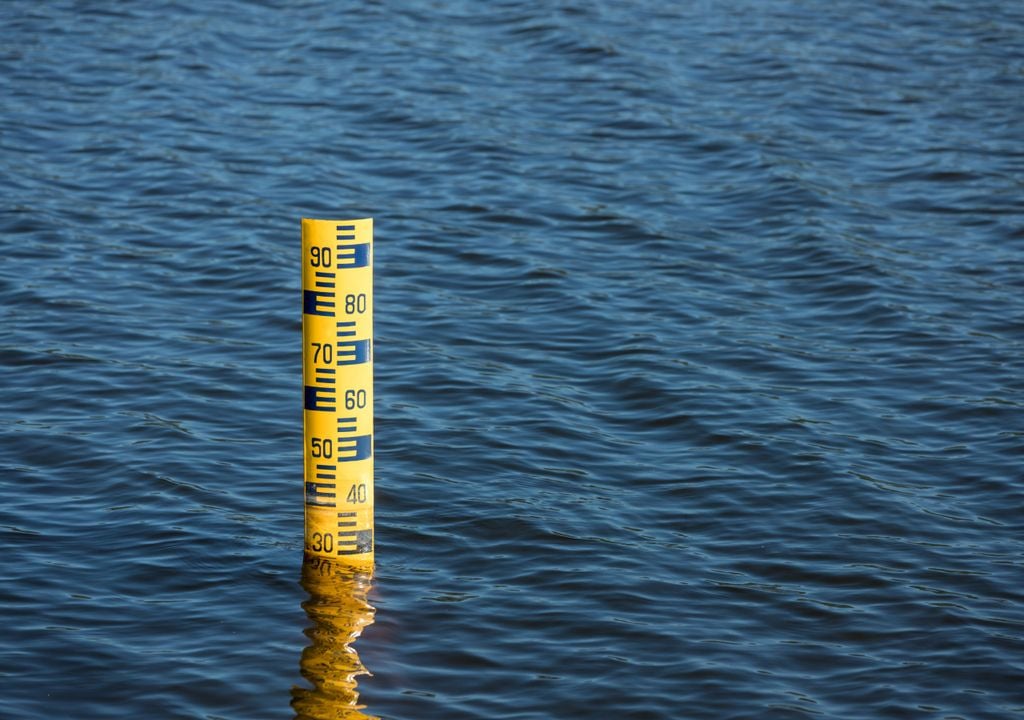
The sea level is rising as climate change contributes to the melting of glaciers and ice sheets and, consequently, ocean water expands in a warming world. But has the sea level ever been higher than it is today? And when was it taller?
In short, the sea level has already been higher than the current one. However, it is not yet known exactly when it reached its highest point, although scientists have some ideas.
Theories about sea level
The sea level will have reached its maximum 117 million years ago, during the Aptian era. At that time, which was part of the Cretaceous period (145 million to 66 million years ago), the sea level was about 200 meters higher than it is today, according to a 2022 study published in the journal Gondwana Research.
"In the last 540 million years, the highest levels of the sea occurred in the Cretaceous, at the time when dinosaurs were walking on Earth."
Douwe van der Meer, the main author of the study and guest researcher at the University of Utrecht, the Netherlands.
Jun Korenaga, professor of Earth and Planetary Sciences at Yale University, stresses that after this time mark it is more difficult to calculate the sea level, so any calculation will be nothing more than speculation.
Korenaga's investigation suggests that the sea level would be higher much earlier, when the first continents were still forming and the Earth's surface was almost devoid of dry land.
The danger of thawing in the short and long term
n the short term, sea level is a function of the thawing. For example, when the Thwaites glacier (known as the "Claciar of the Last Judgment") of Antarctica melts, the entire ice mantle of West Antarctica may collapse, increasing the global average sea level by about 3.4 m.
In the long term, the displacement of the continents and the enlargement of the seabed also come into play. And then there is the curved ball: Korenaga believes that the primitive oceans had more water than they currently have. Since the genesis of the planet, the oceans may have been slowly drained into the Earth's mantle.
The last time the seas were above their current height was about 120,000 years ago, during the last interglacial period (130,000 to 115,000 years ago), when modern humans still shared the planet with our cousins Neanderthal and Denisovan.
At that time, a warmer climate (due to predictable changes in the Earth's orbit) caused the Antarctic ice to thaw, causing the sea level to reach a peak of about 6 m above the current average.
Recent history vs. historical records
Currently, the ice is melting, because the planet is in another warming phase, which is believed to be more accelerated than normal due to anthropogenic activity. In both periods, the Earth has crossed a long ice age, because the planet maintains the polar ice caps. Among the great glacial ages, the Earth can lose its polar ice, as has happened thousands of years ago.
When the Earth is completely (or even almost) free of ice, the sea level can reach 10 times the level of the last interglacial period.
"If we retreat about 50 million years, there is no ice in Greenland, there is no ice in Antarctica. At that time, the sea level rose about 70 meters."
van der Meer.
And although the sea level is higher when ice levels are lower, this does not fully explain the high sea during the Cretaceous, when 30% of today's dry land was under water, said van der Meer. At that time, plate tectonics also played an important role. More specifically, van der Meer calculated that the sea level was higher at the time South America moved away from Africa, between 200 million and 100 million years ago.
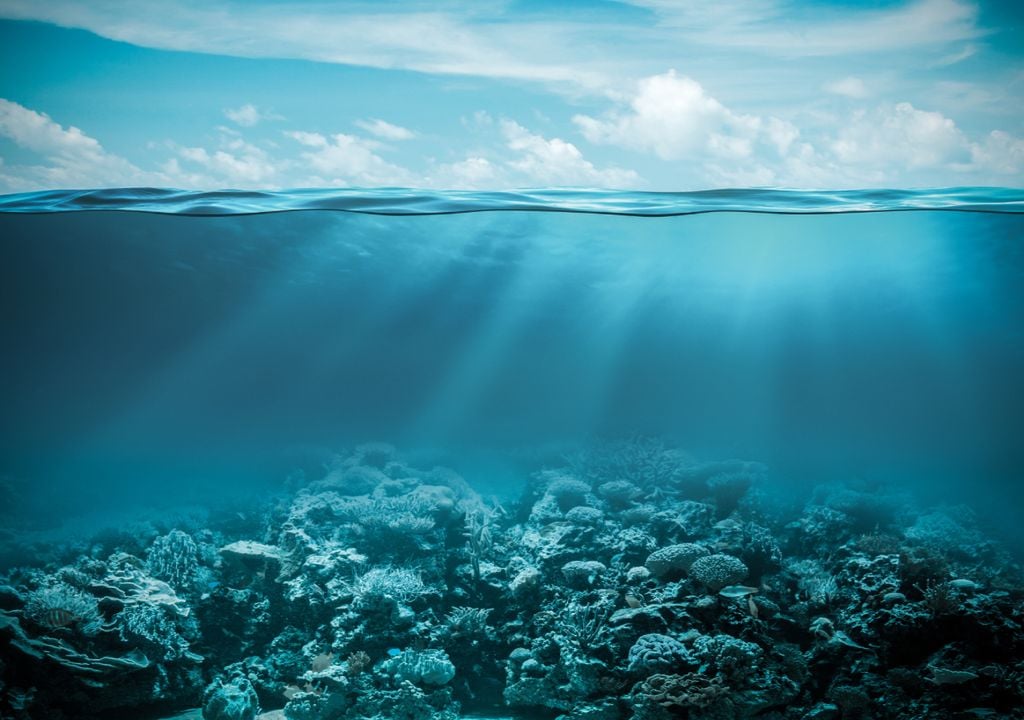
Some curiosities about sea level
- The Cretaceous combined the absence of polar ice with shallow oceans to obtain the highest sea levels of the last 500 million years. This period of time, the Phanerozoic eon (541 million years ago to the present), is the best studied, because that's when complex life - and fossils - became common;
- The high levels of radioactive compounds in the first rocks suggest that the first continents were warmer, weaker and not yet strong enough to maintain their shape. Until the continents solidify, the volcanic islands may have been the only dry land;
- In an article published in the journal Philosophical Transactions of the Royal Society A, Korenaga and his colleagues estimated that the Earth's surface initially had twice the water it currently has;
- Like the oceanic plates themselves, water can enter and exit the magma under the earth's crust. Korenaga's mathematics suggests a liquid loss of water from the surface oceans over billions of years.
If all this is confirmed, although the seas continue to rise, we can say that their days with higher levels are probably in the past.
News reference:
van der Meer D., Scotese C., Mills B., et al. Long-term Phanerozoic global mean sea level: Insights from strontium isotope variations and estimates of continental glaciation. Gondwana Research (2022).
Korenaga J., Planavsky N., Evans D. Global water cycle and the coevolution of the Earth's interior and surface environment. Philosophical Transactions of the Royal Society A (2017).
